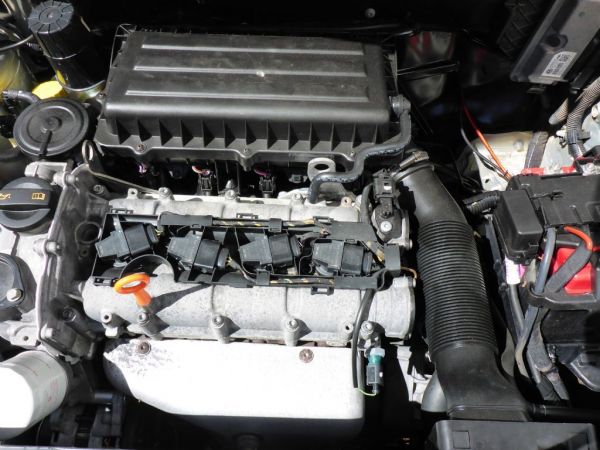Increase fuel efficiency with a top-tier clp engine.
Wiki Article
Exactly How a Clp Engine Can Improve Performance in Various Industries
The advent of CLP engines marks a significant change in functional effectiveness throughout numerous industries, driven by their capacity to enhance gas consumption and lessen downtime. Industries such as manufacturing and logistics stand to get considerably from their durable design and constant power output, which guarantee to streamline operations and boost productivity. As companies significantly focus on sustainability together with performance, the role of CLP engines ends up being also more essential. What remains to be seen is exactly how these innovations will form the future landscape of commercial operations and their influence on more comprehensive financial trends (clp engine).Overview of CLP Engines
CLP engines, or Continuous Fluid Propellant engines, stand for a considerable improvement in propulsion innovation, particularly for space applications. These engines make use of a continual feed system that enables the continual expulsion of propellant, resulting in enhanced performance and efficiency compared to typical strong or hybrid propulsion systems. By preserving a constant circulation of fluid propellant, CLP engines can achieve extra exact thrust control, which is crucial for steering spacecraft in different mission situations.The design of CLP engines incorporates sophisticated materials and cutting-edge fuel monitoring systems. clp engine. This leads to lowered weight and boosted reliability, crucial aspects for long-duration area goals. Moreover, the continuous operation minimizes the danger of burning instability, a typical obstacle in traditional rocket engines.

Advantages in Production
The production of Constant Fluid Propellant (CLP) engines offers numerous significant benefits that improve both efficiency and cost-effectiveness. One of the key advantages is the structured production process, which decreases the complexity related to typical propulsion systems. By making use of fluid propellant, producers can achieve better accuracy in engine performance, bring about maximized power outcome and lowered waste.In addition, CLP engines promote a higher degree of modularity, permitting much easier combination into numerous production lines. This versatility can considerably lower preparations and enhance total operational flexibility. The use of CLP technology additionally has a tendency to minimize the demand for substantial maintenance as a result of fewer relocating parts, which converts into reduced downtime and functional costs.

Applications in Logistics
Leveraging Constant Fluid Propellant (CLP) engines in logistics uses substantial benefits in functional effectiveness and dependability. These engines supply a durable option for different transport requirements, allowing the seamless movement of goods across substantial ranges. The integral layout of CLP engines enables regular power outcome, which equates into smoother and more foreseeable transport routines.One of the essential applications of CLP engines in logistics is in sturdy freight transportation, where they can drive both ground and aerial lorries. Their capacity to maintain high performance under varying tons conditions ensures that shipment timelines are satisfied, consequently improving customer complete satisfaction. Additionally, CLP engines can be incorporated into automated logistics systems, helping with real-time monitoring and enhancing route planning.
Furthermore, the toughness of CLP engines decreases upkeep downtime, enabling logistics companies to optimize their operational capacities. This is especially beneficial in warehousing procedures, where effectiveness in handling and moving products is crucial. As logistics remains to progress, the assimilation of CLP engines stands for a forward-thinking approach that not only improves efficiency but likewise supports the market's expanding demands for dependability and speed.
Effect on Energy Performance
How do Constant Fluid Propellant (CLP) engines improve power efficiency in transportation? CLP engines make use of a consistent flow of fluid gas, maximizing burning processes and preserving a secure thrust outcome. This layout minimizes energy losses connected with traditional combustion engines, where gas distribution can vary and cause inadequacies.The continuous operation of CLP engines enables check here for an extra reliable thermal cycle, resulting in higher certain impulse contrasted to standard engines. clp engine. This equates to minimized gas intake for the very same amount of work done, substantially decreasing functional prices throughout numerous transport fields, consisting of aeronautics and maritime industries
Moreover, the ability of CLP engines to preserve ideal performance under varying load conditions lowers the need for frequent acceleration and slowdown, further enhancing gas performance. Boosted power performance not just adds to set you back financial savings yet additionally brings about decrease greenhouse gas discharges, lining up with worldwide sustainability goals.
Future Trends and Innovations
Emerging advancements in Continuous Liquid Propellant (CLP) engine technology assurance to change the landscape of transport effectiveness and sustainability. As markets pivot toward greener choices, CLP engines stand at the center, incorporating ingenious materials and layout techniques that improve performance while minimizing ecological effect.One of one of the most encouraging patterns is the adoption of crossbreed systems that integrate CLP engines with renewable resource resources. This synergy can maximize gas consumption and lower discharges, aligning with international sustainability goals. Moreover, innovations in computational liquid dynamics (CFD) are facilitating the layout of more aerodynamically reliable engines, resulting in reduced drag and boosted fuel performance.
Additionally, the growth of smart surveillance systems is set to improve operational performances. These systems take advantage of information analytics and IoT technology to maximize engine performance in real-time, making sure that the engines run within their most efficient specifications.
As study continues to explore alternative propellant solutions-- such as biofuels and artificial fuels-- the future of CLP engines looks appealing. By harnessing these developments, sectors can not just improve their effectiveness yet also contribute significantly to this contact form a cleaner, extra lasting future in transport.
Conclusion
To conclude, CLP engines stand for a substantial development in effectiveness throughout numerous sectors. Their capability to maximize fuel consumption and minimize functional prices, combined with a continuous feed system, improves power outcome and functional reliability. The integration of advanced materials and fewer moving parts reduces maintenance demands, while positioning with sustainability goals settings CLP engines check it out as a critical innovation for the future. Proceeded advancement in this area guarantees additional enhancements in effectiveness and environmental performance.Report this wiki page